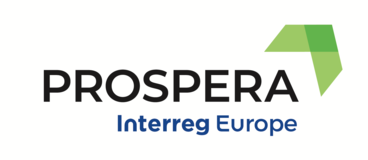Day1 – 10/09/2021
On the first day of the study visit, Swedish partners gave an overall picture of the good practices of Varberg. Project partners activated their knowledge of the GPs and started to think about connections between the partner cities.
Day2 – 28/09/2021
Session 1 – Morning session, presentations
In the Morning session, Swedish partners presented the challenges and good practices of Varberg.
First, Christofer Bergenblock, Vice Mayor of Varberg welcomed the project partners and stakeholders.
Project Managers of PROSPERA Ulrika Rylin /Rural Development Strategist/ and Frida Eriksson /Urban Development Strategist/ introduced the geography of the city, the challenges, and the strategies for densification and green areas.
The first presented good practice Grasslands is a project to increase knowledge about natural values in peri-urban meadows and how these can be preserved and developed for increased biodiversity. The presenter showed the process of the analysis of flora and fauna in the selected areas, and the development of an ecological network.
Grasslands is a joint nature conservation project among the Municipality of Varberg, the Swedish Society for Nature Conservation, and the Halland Botanical Society. Peri-urban meadows have been inventoried to increase knowledge of natural values in these areas; identify what needs to be done to maintain or develop these values; and how to restore meadow environments that previously showed higher natural values.
The second good practice Lassabacka Landfill was presented by the Project Manager Lina Gyllensvärd. She introduced the process of the environmental and technological assessment. Residents were involved in the planning of the area, too.
Lassabacka landfill is a project to cover a former landfill area in the peri-urban area of Varberg, and at the same time to develop the site into an attractive destination, with high nature and recreational values. The project is under implementation.
The third good practice Rural Village Development Strategy was presented by Ulrika Rylin and Frida Eriksson. In the Municipality of Varberg, there are small villages in the rural area east of the town, further away from Varberg. The process of creating the strategy involved three steps: analysis of the rural area (including village walks), defining challenges and creating a vision, and defining future actions.
“Rural Village Development Strategy” is a new way of working with sustainable development in small rural villages. It is a collaboration between the municipality and local stakeholders, where the actors together identify challenges and possibilities and finally propose strategies for development. The project is ongoing, and the process evolves and changes as time goes on.
The last presented good practice was EMC and ARENA project. The project manager of EMC presented some interesting activities, for example, breakfast seminars, where they give the members advice, suggestions in 4 -5 minutes. Circular Kickstart is another activity, it is a method to introduce circular economy to businesses. Workshops and an Action plan also help members incorporate circular economy into their activities.
EMC (Energy and Environmental Centre) is a public-private partnership (PPP) that supports the environmental sustainability of the local business community. It offers different services to its members such as education, events, consultancy in sustainability, and project management. The ARENA project puts the focus on how to support and promote the transition towards a circular and bio-based economy.
Session 2 - Local discussion
During session 2, partners discussed the presented good practices with their local stakeholders, focusing on the similarities and the possibility of transferring the GPs of Varberg.
Session 3 - Plenary closing Session
In the plenary closing session, partners shared and discussed the lessons learned from local round tables. They also collected further questions for the Swedish partners to answer on Day3 of the study visit.
Day3 – 07/10/2021
On Day3 of the Study visit to Varberg, project partners deeply discussed the good practices, and their previous questions were answered by the presenters of the good practices.

